
Tasmania is an island state of Australia. It is located 240 km (150 mi) to the south of the Australian mainland, separated from it by the Bass Strait. The archipelago contains the southernmost point of the Australian federation. The state encompasses the main island of Tasmania, the 26th-largest island in the world, and the surrounding 1000 islands. It is Australia's least populated state, with 569,825 residents as of December 2021. The state capital and largest city is Hobart, with around 40 percent of the population living in the Greater Hobart area.
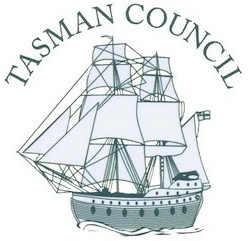
Tasman Council is a local government body in Tasmania, situated in the south-east of the state. Tasman is classified as a rural local government area and has a population of 2,404, the region covers both the Tasman and Forestier peninsulas, with Nubeena the principal town.

Longford is a town in the northern midlands of Tasmania, Australia. It lies 145 m above sea level at the convergence of the Macquarie River and the South Esk River, 21 km south of Launceston and a 15-minute drive from the airport. It is just south of the Illawarra Road, a road connecting the Bass and Midland Highways. It has a population of 3,863 and is part of the Northern Midlands Council area. The region is predominantly agricultural, noted for wool, dairy produce and stock breeding.
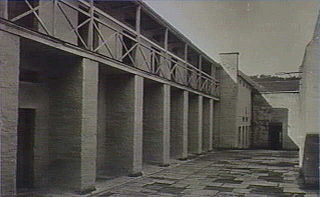
The Cascades Female Factory, a former Australian workhouse for female convicts in the penal colony of Van Diemen's Land, is located in Hobart, Tasmania. Operational between 1828 and 1856, the factory is now one of the 11 sites that collectively compose the Australian Convict Sites, listed on the World Heritage List by UNESCO.

Bothwell, Tasmania is a small town with a population at the 2016 census of 485. Situated in central Tasmania on the River Clyde in a broad valley, it is notable for hunting and being a lake district. It is part of the municipality of Central Highlands Council and will celebrate the bicentenary of its founding in 2022. Nearby locations include Hollow Tree, Hamilton, Ouse and Kempton.
Ross Bridge is an historic bridge in the town of Ross in central Tasmania, Australia, completed in July 1836. It crosses the Macquarie River.

Ross is a village in the Midlands of the state of Tasmania in Australia. On the Macquarie River, Ross is located 78 km south of Launceston and 117 km north of Hobart. The town is listed on the Register of the National Estate and is noted for its historic bridge, original sandstone buildings and convict history.
Brickendon and Woolmers Estates is an Australian National Heritage and World Heritage area, as part of the Australian Convict Sites World Heritage Area. It consists of adjacent farming properties:

Woolmers Estate is a farming estate located in Longford, Tasmania, founded in 1817 by prominent grazier and member of parliament Thomas Archer. It consists of an 82ha property, including a two-part manor house, coach house, the National Rose Garden, extensive outbuildings and convict cottages and formal gardens. The main house consists of a brick nog weatherboard homestead, built in 1819, with an attached extensive addition in Italiate style, designed by William Archer and built in 1842-1843. From the 1819 completion of the main house to 1994, it was one of the main ancestral homes of the Archer family.

Australian Convict Sites is a World Heritage property consisting of 11 remnant penal sites originally built within the British Empire during the 18th and 19th centuries on fertile Australian coastal strips at Sydney, Tasmania, Norfolk Island, and Fremantle; now representing "...the best surviving examples of large-scale convict transportation and the colonial expansion of European powers through the presence and labour of convicts."
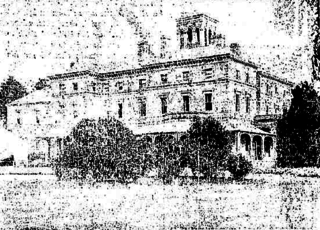
Mona Vale is a large heritage listed 1860s country house in Ross, Tasmania. Completed in 1867, it is well locally known as the "Calendar House", for its reportedly 365 windows, 52 rooms, 12 chimneys and seven entrances. The property is on the Tasmanian Heritage Register and the Register of the National Estate.
William Archer (1820–1874) was an Australian architect, naturalist, grazier, politician and member of the prominent Archer family. He was the second son of Thomas Archer, a prominent pastoralist and politician himself. A keen interest in architecture led to him going to London to study architecture when he finished school, where he studied under William Rogers and Robert Stephenson. During his life he built many colonial buildings across Tasmania, served as a member of both the Tasmanian House of Assembly and Tasmanian Legislative Council and made significant contributions to botany, with several native Tasmanian plants named after him. Despite this he died penniless at his brothers house Fairfield on 15 October 1874.

Henry Hunter (1832–1892) was a prominent architect and civil servant in Tasmania and Queensland, Australia. He is best known for his work on churches. During his life was also at various times a state magistrate of Tasmania, a member of the Tasmanian State Board of Education, the Hobart Board of Health, a Commissioner for the New Norfolk Insane Asylum and President of the Queensland Institute of Architects.
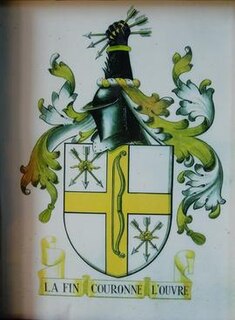
The Archer family are a notable family in Tasmania, Australia, prominent in society, business and politics of Tasmania for the last two centuries. They are best known today for their now world-heritage listed farm estates, Brickendon Estate and Woolmers Estate, but have contributed to many areas of Tasmania throughout their history. Other members of the family have been Mayors of Hertford in England and influential in the American Civil War.
Cheshunt House is an Italianate mansion in the Meander Valley, Tasmania, 10 kilometers from Deloraine. It was designed and originally owned by politician, botanist and architect William Archer, started in 1851-52. It was purchased incomplete by the Bowman Brothers from William Archer in 1873, who completed it to his design in 1885. It fell into disrepair during the period of the World Wars and the Great Depression, before a restoration project was undertaken by the family in the 1970s. It is still owned by the Bowman family.
Symmons Plains Estate is a historic farm and mansion in the locality of the same name, near Perth, Tasmania. A 856ha property, the estate dates back to 1820s, with the main Georgian house built in 1839. It is listed on the Tasmanian Heritage Register. In 1978, the homestead and its garden and outbuildings were registered on the now-defunct Register of the National Estate.
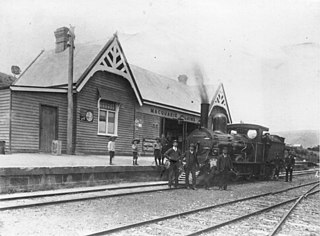
Gretna is a rural locality in the local government areas (LGA) of Central Highlands and Derwent Valley in the Central and South-east LGA regions of Tasmania. The locality is about 20 kilometres (12 mi) south-east of the town of Hamilton. The 2016 census has a population of 211 for the state suburb of Gretna. It was formerly known as Stony Hut Plains, though the Gretna post office was known as Macquarie Plains for many years. It has a postcode of 7140.
The Tasmanian Heritage Register is the statutory heritage register of the Australian state of Tasmania. It is defined as a list of areas currently identified as having historic cultural heritage importance to Tasmania as a whole. The Register is kept by the Tasmanian Heritage Council within the meaning of the Tasmanian Historic Cultural Heritage Act 1995. It encompasses in addition the Heritage Register of the Tasmanian branch of the National Trust of Australia, which was merged into the Tasmanian Heritage Register. The enforcement of the heritage's requirements is managed by Heritage Tasmania.

The Shot Tower at Taroona is a heritage listed historic building between Hobart and Kingston, Tasmania. It was the tallest building in Australia for four years (1870-1875), and the tallest structure in Tasmania until it was superseded by the Mount Wellington broadcast tower in 1960. The Taroona Shot Tower is believed to be the tallest circular sandstone tower in the world.














